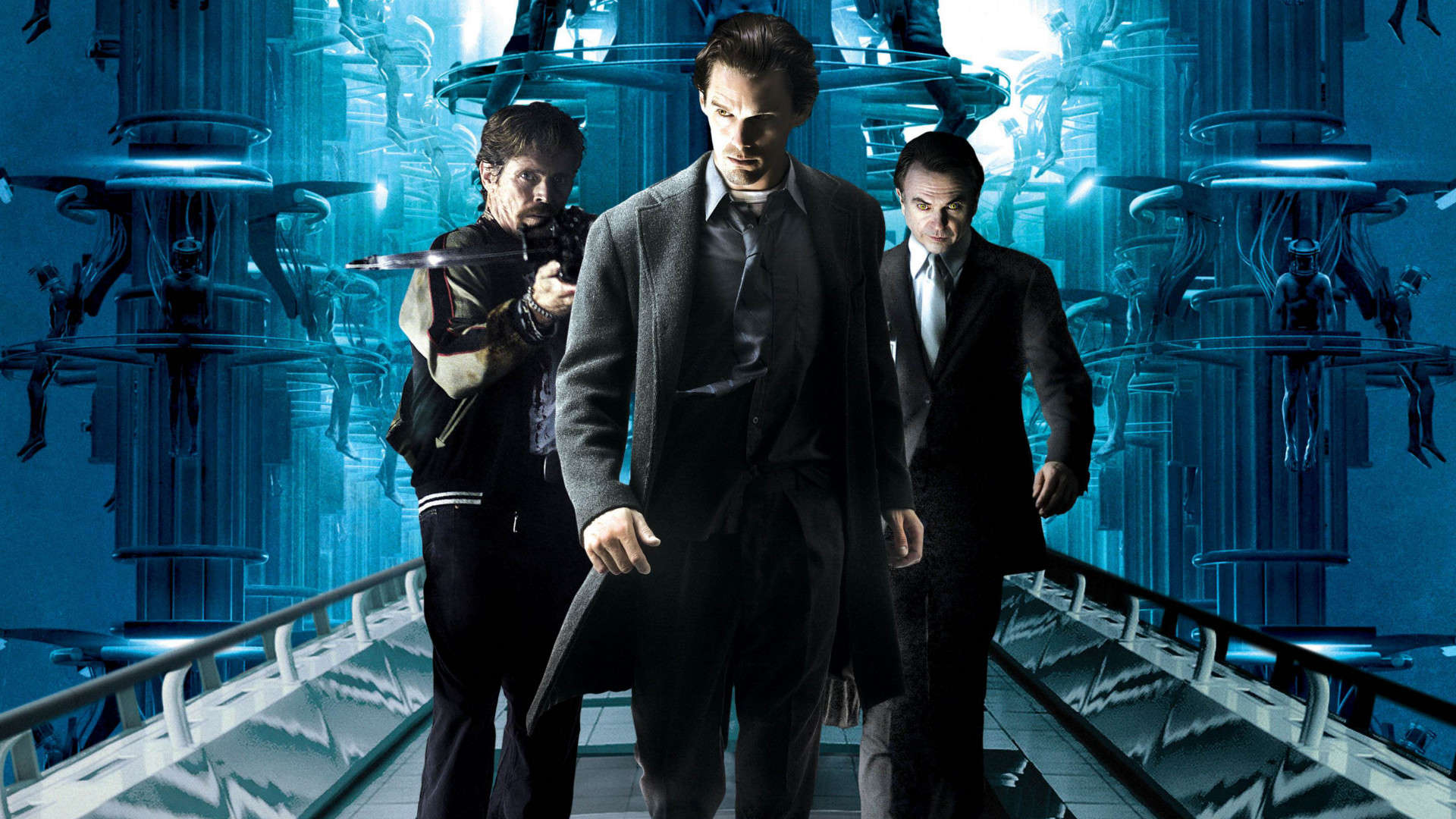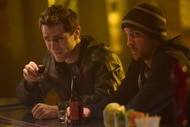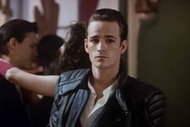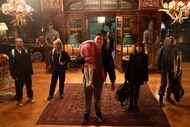Create a free profile to get unlimited access to exclusive videos, sweepstakes, and more!
This Week in Genre History: Daybreakers lit the way for a different sort of vampire story

Welcome to “This Week in Genre History,” where Tim Grierson and Will Leitch, the hosts of the Grierson & Leitch podcast, take turns looking back at the world’s greatest, craziest, most infamous genre movies on the week that they were first released.
Hollywood has its famous sibling directing duos. The Coen brothers. The Wachowskis. Joe and Anthony Russo. But in the world of mid-budget fare, there’s an Australian pair that’s less well-known but consistently bringing new wrinkles to familiar genre tropes: Peter and Michael Spierig. Twin brothers who were born in Germany but grew up in Sydney and Brisbane, they’ve specialized in left-of-center horror and sci-fi films, paying homage to the classics while trying to reimagine the thematic terrain. And their breakthrough occurred with their second feature, which hit theaters on Jan. 8, 2010. Eleven years later, Daybreakers' vision of a world devastated by a plague is even more upsetting than how it landed back then.
Set in what was then the near-future — 2019, to be exact — this dystopian noir starred Ethan Hawke as Edward Dalton, a conscientious scientist who works at Bromley Marks, a pharmaceutical company that provides life-giving blood to a growing, needy customer base. You see, the country is now overrun by vampires — Dalton is one, too — and with the human population rapidly decreasing, there’s a premium on real blood. Dalton is hoping to come up with a viable blood-like substitute, but he eventually discovers that there’s an underground group (led by Elvis, played by Willem Dafoe) who believe they’ve found a cure for vampirism. Dalton is thrilled at this prospect, but some in power may not actually want life to return to the way it was... turns out, there are big bucks in blood-sucking.
Although the parallels to our modern pandemic are slight, Daybreakers nonetheless conjures up an atmosphere of queasy uncertainty — a sense that normalcy is gone forever, replaced by fear and cruelty. In the tradition of other relatively inexpensive sci-fi movies like Dark City, the Spierig brothers’ fright film was ambitiously designed on a shoestring, presenting us with a gloomy metropolis ruled by urban vampires who had learned to cope with their new reality. (Nobody dresses like Dracula — it’s regular clothes and the humdrum existence of everyday life.) Daybreakers wasn’t a massive hit — early January releases rarely are — but it set the filmmakers on the path they’re still on today. Even if you don’t recognize their names.
Why was it a big deal at the time? Vampire movies were in vogue in the late '00s thanks to the big-screen adaptation of Stephenie Meyer’s insanely popular Twilight books. The 2008 film was one of that year’s biggest hits, and the following year’s The Twilight Saga: New Moon was even more of a box-office behemoth. But that franchise played up the melodramatic, teen-crush aspect of vampirism — Twilight was essentially a moody love story — which wasn’t Peter and Michael Spierig’s interest. Not that they were reacting to the Robert Pattinson films in any way — in fact, the brothers were utterly oblivious of the phenomenon.
“When we made Daybreakers, I had never even heard of Twilight,” Michael admitted at the time. If you don’t believe him, consider that Hawke’s character is named Edward — just like Pattinson’s. “I started seeing these 'Edward the Vampire' T-shirts,” Michael recalled. “I’m like, 'Do they already know about our film? What the hell’s going on?'"
The Spierig brothers’ first feature, 2003’s Undead, was a gonzo zombie movie that poked fun at the conventions while also being super gory, but for their follow-up, they wanted to go in a more serious, realistic vein, imagining the grim logistics of what a vampire plague would look like.
“What we wanted to do was sort of tap into the pop culture understanding of what vampires actually are,” Peter once said. “Having them cast no reflections, having them burn in the sunlight, and things like that. We wanted to try to add something new to the mythology, but doing it in a way that seemed to fit into the world. Not something that just seems completely out of place.”
Borrowing from other noir-ish sci-fi dystopias such as Metropolis and Blade Runner, the brothers imagined a cityscape in which the hustle and bustle took place entirely at night. (After all, if the country was beset by vampires, it would become a nocturnal world.) And the Spierigs set their sights on bigger actors than they’d wrangled for Undead. One of them, Hawke, initially wasn’t interested in working with the filmmakers after watching about 10 minutes of Undead and deciding it was terrible. But then fate intervened: Over the holidays that year, Hawke spent some time with his two younger brothers. “They couldn't sleep and they were hanging out, and they put that movie on and they were howling with laughter,” Hawke recalled. “I walked down and said, ‘What are you guys watching?’ and it was this movie, Undead. So, I sat down and watched it with them, and then I thought it was genius. I somehow didn't get [the Spierig brothers’] sense of humor.”
But Hawke was equally impressed with the step up the directors made with Daybreakers. “What I think is most remarkable about it is that this movie is not based on a graphic novel or anything,” he said in the same interview, later adding, “There is a level of imagination at work because they've thought through what this world would be like and they've thought through the analogy aspect of the movie, trying to get it working as a straight-up genre film with a subtext.” And once Hawke came on board, other name actors, like Dafoe and Sam Neill (who plays the unscrupulous head of Bromley Marks), signed up as well.
Imagining a stylish wardrobe for their characters and a retro-futuristic production design, the brothers had to stretch a $20 million budget. Thankfully, they’d had experience creating something out of nothing from their years of directing TV commercials and shorts before trying their hand at features. “Australian filmmaking in general is all low-budget, but you learn a few tricks like how to recycle a set,” Michael said. “We recycled a few sets and you can't even tell that Sam Neill's office is also the boardroom. We just kept reusing a lot of different things. Another way to save money is Peter and I did a lot of the visual effects ourselves.”
After premiering at the Toronto Film Festival in September 2009, just a couple of months before New Moon arrived in theaters, Daybreakers was set for a January release. The first couple weeks of the new year are usually when studios dump their duds, with audiences too busy returning to work and school after the holidays to be thinking about movies. (And if they are, they’re catching up with Christmas releases.) But every once in a while, a well-placed, interesting genre movie can sneak in there and make a little noise. And that’s what Daybreakers did.
What was the impact? In its opening weekend, Daybreakers ended up in fourth place. (Want a time capsule of early 2010? The top three films in the country were Avatar, Sherlock Holmes, and Alvin and the Chipmunks: The Squeakquel.) The movie plunged out of the Top 10 the next weekend, but it was still modestly profitable, bringing in about $51 million worldwide.
Michael and Peter Spierig had ideas for a sequel, which never materialized. But after the jokey, derivative Undead, Daybreakers established their bona fides as serious genre filmmakers who could turn a vampire flick into a socio-political commentary on greed, prejudice, and class. (Plus, they guessed correctly that Dafoe would look badass rocking a crossbow.)
Hawke clearly enjoyed his time working with the brothers — he reunited with them on their next feature, the twisty 2014 time-travel thriller Predestination. Once again, the filmmakers flaunted a sharp visual sense without a lot of money. “There are no major complex visual effects,” Michael said of Predestination. “It's all old-school tricks like split screens and doubles and moving things around. There's this assumption that science fiction is spaceships and robots, and we really wanted to go back to old-school sci-fi where it's about concept and ideas that make people think about their lives, fate and chance and all those sorts of things.”
Since then, the Spierig brothers have kept making low-budget horror films, helming the 2017 Saw sequel Jigsaw and the 2018 gothic tale Winchester with Oscar-winner Helen Mirren, both of which were sizable moneymakers. Where other indie directors eventually jump to the mainstream, sacrificing creative control for fatter paydays, these guys have happily just done their own thing. “The reality is that quite often when you have very limited resources it forces you into a situation where you have to be creative or find creative solutions to problems rather than just throwing money at them,” Peter said in 2010. “And quite often that is a better way to go — to find a way to deal with things.”
Has it held up? When it came out, Daybreakers was praised for its world-building ambition, but faulted for its follow-through — in essence, the idea of the film proved more satisfying than the film itself. Eleven years later, that still seems right. But in the past decade, we’ve seen so many grandiose depictions of dystopias that Daybreakers’ low-key vibe feels novel by comparison. The Spierig brothers didn’t have the deep pockets of their peers, but they figured out how to make it work.
Plus, they created a vision of vampires that we’d never seen before — one in which they’re as commonplace as everybody you’d see on the subway or walking down the street. Daybreakers had a sleek, sickly look — all greys and greens — that gave the story a nightmarish glow. But at the same time, the Spierig brothers showed off some impressive action chops, especially during a riveting car-chase sequence that played with the rules of vampire lore. (Light can be as lethal as a bullet to a blood-sucker.) The film is far from perfect, but it suggested that some scrappy outsiders with ingenuity and a cool idea could make a scuzzy genre flick that more than earned its eventual cult status.
In the process, Peter and Michael Spierig gave the world an alternative to Edward Cullen.
“I don’t get the sparkling skin [in Twilight],” Peter once admitted. “I really don’t understand that one.” That’s fine: Daybreakers ensured that vampires would once again have some bite.
Tim Grierson is the co-host of The Grierson & Leitch Podcast, where he and Will Leitch review films old and new. Follow them on Twitter or visit their site.














